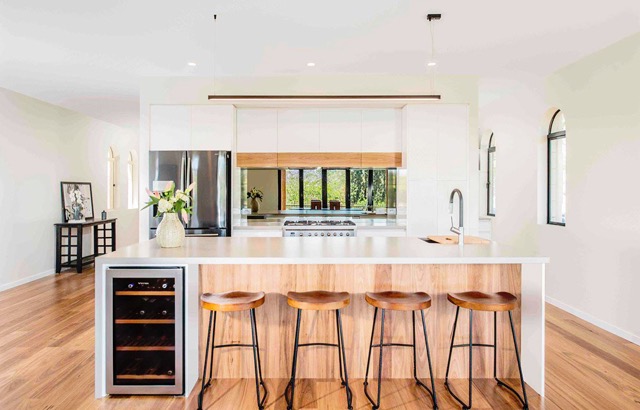When you’re renovating, moving house or starting up in a new build your garden can suffer, but, whilst you concentrate on bigger jobs there are a few stars of the plant world that can keep your garden prospering through those projects. Find the best pick of low maintenance plants for your home below:
Before you start…
To get the most out of your new plants it’s important to lay a foundation in your garden first. Preparing the soil, choosing the best plants for the climate where you live and remembering that, whilst these plants might need little water or care, they still need nurturing in the early stages when they first start to establish in your garden, will help to ensure a successful set up. Planting at this time of year, during early autumn, will give your new plants the best chance of flourishing before summer rolls around again. Watering the plants semi-regularly in the first three months will encourage a deep root system to establish in time for the next heatwave.
Thyme
Who knew this fragrant herb is also well suited to growing in dry gardens! Often used in the kitchen, thyme produces a mass of tiny edible flowers that look good in the garden, especially to those all-important pollinators, and tastes great too. Grow swathes of the Mediterranean herb across garden beds or in between pavers for a lush look throughout the year. Beautiful as well as practical, thyme thrives in well-drained soil positioned in full sun or partial shade. It can also be grown in pots, ideal for balcony gardens.

Acacia
Iconic as Australia’s floral emblem, acacias, also known as wattles, are one of the most low-maintenance and drought-tolerant plants you can have in your garden thanks to their tough structure highly resistant to moisture loss. The Golden Wattle is a fast-growing tree ideally suited to establishing in a young garden – perfect for newly built homes – with tiny puffballs of sweet-smelling yellow flowers blooming in dense clusters come spring. This native plant, usually found growing in the Australian bush, is well suited to harsh climates, though does have a notoriously short life. There are many species of wattle to choose from, but generally all require well-drained soil, plenty of sunlight and ample room to grow in.

Correa
A tough native shrub found mainly in Eastern Australia, this is a valuable plant to have in the garden, particularly when in bloom as their delicate bell-like flowers are rich in nectar, attracting honey-eating birds to the garden. Easy to grow and maintain, correas are best planted in full sun or light shade, well suited to shrub gardens and rockeries though they can also survive growing under large trees – ideal for when you haven’t got much time for landscaping.

Lavender
Fill your garden with fragrance and flowers with a dazzling display of purple lavender. There are three main types of lavender to choose from: English, Italian and French, and all are drought-tolerant once established. Position in a sheltered spot with full sunlight and well-drained soil, or in raised pots, for best results. This perfumed shrub does not tolerate frost, so ensure it suits the climate you live in before planting.

Echium
This bold plant promises to make a statement in your outdoor space. Tolerant of coastal conditions, heat, sunlight and low water levels, echiums will reward almost any garden type with gorgeous spires of purple flowers that attract bees, butterflies and birds. Growing well in full sun and well-drained soil, echiums are ideal for large gardens where they have plenty of room to grow, as they can reach over two metres in height.

Agave
If you’re looking to create more of an architectural display in your garden beds then look no further than the agave plant. These perennial succulents often have dramatic fleshy leaves with serrated edges and spiny pointed tips. Agaves are easy to grow in a sunny position with well-drained, sandy soil, ideal for borders or rockeries. Hardiness can vary between species, though most can survive without water for long periods of time. Once established, these plants can almost be forgotten about as they store water in their thick foliage, using their long roots to absorb more when necessary.

Cordyline
A truly water-wise plant, cordylines give year-round lush foliage and colour when positioned in a shady spot. Easy to care for in both sunny and temperate climates, this palm-like plant promises to bestow a tropical ambience to your garden beds and borders, with minimal watering once established. Their tufts of spiky red, bronze, pink or green leaves will keep the garden looking lush throughout the year whilst you focus on interior projects.

Grevillea
This striking native species ranges from a small shrub to a large tree, identifiable by its distinctive spider-like flowers. The evergreen plants are beautiful yet self-sufficient once established. Preferring a sunny position in the garden, with gritty, well-drained soil, they can benefit from occasional deep watering (Hoselink’s root waterer & soil breaker is ideal). Fuss-free yet exquisite, grevilleas offer an explosion of colour all year round thanks to their nectar-rich flowers irresistible to insects, birds – and us!




